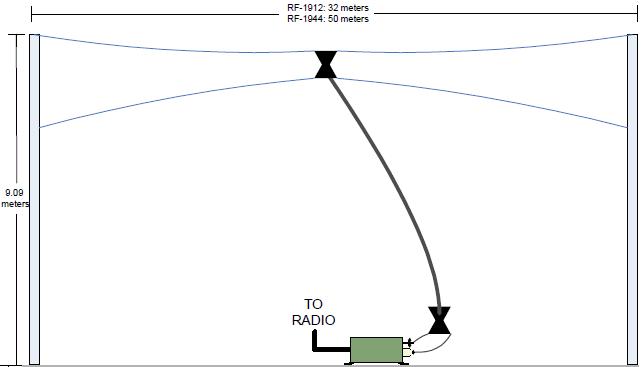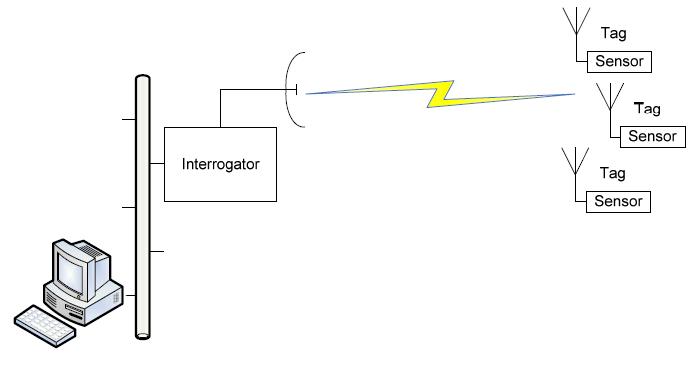Archive for the ‘LTE’ Category
Friday, April 22nd, 2011
One of AT&T’s non-redacted arguments in support of its acquisition of T-Mobile USA is that data usage on AT&T’s network is projected to “skyrocket by a factor of eight to ten” over the next five years due in part to streaming HD video. AT&T’s vision is that T-Mobile’s resources would be used to relieve resulting capacity restraints.
Enabling an HD streaming service will be challenging because of the relatively-high and somewhat-constant bit rates required in a fading radio environment. Wondering how practical this is, I recalled a paper Motorola prepared last year reporting some of its simulation results on mobile broadband streaming video.
(more…)
Posted in AT&T, LTE, T-Mobile, Video | 1 Comment »
Tuesday, March 29th, 2011
The FCC relies on Cisco’s forecast of mobile-broadband data demand as a basis for spectrum policy. Called the Visual Networking Index, it comes up many times in the National Broadband Plan, in other documents, and in speeches.
(more…)
Posted in 4G, IMT-Advanced, LTE, LTE-Advanced, Mobile Broadband, National Broadband Plan, Spectrum | 2 Comments »
Wednesday, February 9th, 2011
This summarizes a selection of applications for the Experimental Radio Service received by the FCC during January 2011. These are related to land mobile radio, VHF propagation study, satellite communications, network-centric warfare, TV white space, software defined radio (SDR), military command and control, remotely piloted aircraft, LTE, radio direction finding, OpenBTS, Identification Friend or Foe (IFF), peer-to-peer communications, flight test telemetry, automotive telemetry, WiMAX, surveillance radar, vehicle radar systems, and millimeter-wave communications.
(more…)
Posted in 3GPP, 3GPP2, 4G, Ad-hoc Networks, Antennas, Automotive, Aviation, Broadband, Broadband Access, Electronic Warfare, Experimental, GPS, GSM, High Frequency, Land Mobile, Location, LTE, Military, Millimeter-wave, Peer-to-Peer, Propagation, Public Safety, Radar, Radiolocation, Satellite, Space Communications, Spectrum, Telemetry, Terminals, TV Broadcasting, UAV, White Space, Wi-Fi, WiMAX, Wireless | No Comments »
Thursday, December 9th, 2010
The debate won’t end but the volume is dropping on the what-is-4G controversy. Previously, I’ve written about the ITU’s characterization of 4G as only applying to the two radio technologies it has designated as IMT-Advanced: LTE-Advanced and WirelessMAN-Advanced (the latest version of WiMAX).
(more…)
Posted in 4G, IMT-Advanced, ITU, LTE, LTE-Advanced, WiMAX, WirelessMAN-Advanced | No Comments »
Friday, October 15th, 2010
Most cellular operators are beginning the transition from 3G technologies to 4G LTE. That will mainly be for high-speed data and not voice, support for which will come years later. Communications engineer Jim Murphy describes some of the networking issues that make voice impractical on LTE on day one. To his comments I’d add that the preferred LTE voice solution is VoIP on the IP Multimedia System (IMS) framework, which has had slow adoption in the mobile community.
Jim’s example is from the 3GPP family of technologies, of which LTE is part. Most 3GPP2 operators, such as Verizon Wireless, are also planning a migration to LTE. They migrate from a different family of technologies, those specified in 3GPP2 and which include cdma2000 developed largely by Qualcomm. In Verizon’s transition, high-speed data on cdma2000 networks, now provided by EV-DO, will migrate to LTE. Voice will stay on cdma2000 1x for several years. That’s not a problem, because that technology keeps improving. The latest version, called cdma2000 1x Advanced, has achieved a 50x increase in voice capacity over the predecessor IS-95 system launched in 1993.
Both 3GPP and 3GPP2 3G voice feature a soft-handover (make-before-break) scheme that allows for, essentially, a circuit-switched connection. Yes, you’ll be able to run Skype and other VoIP services on 4G LTE data networks, if you want. In terms of the total user experience, however, most will prefer the seamlessness of standards-based integrated voice capability.
VoIP is the future. For 4G voice, though, it’s just great in theory at this time.
Posted in 3GPP, 3GPP2, Infrastructure, LTE, Qualcomm, Standardization, Wireless | No Comments »
Saturday, August 14th, 2010
This summarizes a selection of applications for the Experimental Radio Service received by the FCC during July 2010. These are related to high-frequency data, military communications, environmental data collection, synthetic aperture radar, WiMAX, sensor networks, interference-resistant communications, LTE, rail transportation, air traffic control, white space networks, and RFID.
- Harris filed an application (with supporting exhibits) for experimental license to operate on various frequencies between 3 and 15 MHz to test an experimental high-frequency wideband waveform that is intended to operate at either 12 kHz bandwidth or 24 kHz bandwidth to allow faster data transfer via high-frequency communications.

- Harris also filed an application (with supporting exhibit) for experimental license to operate on 4.94-4.99 GHz in support of development of US Army’s Warfighter Information Network: Tactical (WIN-T) and Future Combat Systems (FCS) programs. Equipment is to consist of the HNRe2 Highband Network Radio, manufactured by Harris. Harris says the HNRe2 is comprised of four elements: 1) the Baseband Processing Unit, 2) the Highband RF Unit (HRFU), 3) an Inertial Navigation Unit (INU), and a GPS device. The HRFU further consists of an upconverter, a High-Powered Amplifier (HPA), a Switched Beam Antenna (SBA), a Low-Noise Amplifier (LNA), and a downconverter). The test network will consist of five fixed nodes and one mobile node. The FCC has asked Harris to justify extended testing in a band that is primarily allocated for non-government public safety use.
- Canon U.S.A. filed an application (with supporting exhibits) for special temporary authority to operate wireless devices in support of a private technology and product exhibition from September 1, 2010 through September 3, 2010 at the Jacob K. Javits Convention Center in New York, NY. Canon is planning to import many wireless devices from Japan to be used with displays during the exhibition. These devices are not FCC compliant and not expected to be FCC compliant until after the exhibition. Frequencies requested include 315.0-315.7 MHz, 2.40-2.50 GHz, 5.18-5.67 GHz, and 61.6-62.5 GHz. This application was granted on August 11.
(more…)
Posted in Amateur Radio, Antennas, Aviation, Experimental, GPS, High Frequency, Infrastructure, Interference, LTE, M2M, Military, Millimeter-wave, Modulation/Demodulation, Public Safety, Radar, RFID, Satellite, Sensors, Telemetry, White Space, WiMAX, Wireless | No Comments »
Thursday, June 3rd, 2010
This summarizes a selection of applications for the Experimental Radio Service received by the FCC during May 2010. These are related to WiMAX, sensors, SAW devices, radio-location, ultra-wideband, white space, aircraft passenger communications, landslide monitoring, collision avoidance radar, mobile DTV, LTE, Inmarsat handsets, highway rock-fall monitoring, HF communications, spacecraft link characterization, and interference into broadband access.
- Polytechnic Institute of NYU filed an application (with supporting exhibit) for experimental license to conduct a network research project using WiMAX on 2535-2540 MHz. This is part of the nationwide Global Environment for Network Innovations (GENI) project, a suite of infrastructure that will support experimental research in network science and engineering. GENI is supported by the National Science Foundation and managed by the GENI Project Office at BBN Technologies.
- Mnemonics, Inc. filed an application (with supporting exhibits) for experimental license to operate in support of a research project that is to develop and demonstrate the viability of wirelessly extracting measured data from a network of passive surface acoustic wave (SAW) sensor devices. This sensing technique is said to have several advantages over existing sensors, including no wired connections needed to extract data, no power requirements, operation up to 1000 degrees C., and sensor cost in-quantity in the tens of cents each. Operation will be on 915 MHz.

(more…)
Posted in Aviation, Business, DTV, Experimental, High Frequency, Interference, LTE, Military, Millimeter-wave, Public Safety, Radar, Radiolocation, Satellite, SAW, Sensors, Space Communications, Ultra-wideband | No Comments »
Tuesday, May 25th, 2010
.
On May 24 3GPP presented a seminar in Moscow, Evolving Networks to LTE – 3GPP Perspective. There were technical presentations and a panel with the main Russian operators.
The 3GPP Core Network migration path for HSPA+ and LTE was presented by Hannu Hietalahti, TSG CT chairman. The presentation reviewed the 3GPP CoreNetwork, Optimization for IP traffic, the LTE voice solution, and LTE deployment.
An update on the evolution of the GERAN family of standards (GSM, GPRS, EDGE) was presented by Andrew Howell, TSG GERAN Chairman. He concludes that the GSM radio interface has evolved over the past few years and will continue to evolve to bring additional features and improvements. The ongoing work within TSG GERAN continues to increase the suitability of GSM/GERAN: for standalone networks, for networks used in conjunction with other radio access technologies (UMTS, LTE…) to provide global coverage whilst allowing excellent service continuity, and as a future proof platform providing a smooth migration path towards other 3GPP based systems (UMTS, LTE).
A progress report on LTE Radio Access Networks was presented by Takehiro Nakamura, 3GPP TSG-RAN Chairman. The presentation reviewed 3GPP standardization activities, LTE Release 8, LTE Release 9, and LTE-Release 10 and beyond (LTE-Advanced).
Services evolution and the impact of IMS was reviewed by Stephen Hayes, Chair 3GPP-SA. He dispelled some myths about LTE and IMS, looked at multimedia telephony services, and looked at fixed mobile convergence.
A regulatory update on flexible use of spectrum and digital dividend was presented by Igor Minaev, ETSI Technical Officer, ETSI Standardization Projects. The digital dividend is a part of radio spectrum that is freed up as a result of more efficient spectrum use through the switchover from analogue to digital terrestrial TV.
The Impact of Femtocells on Next Generation LTE Mobile Networks was presented by Andy Germano, Vice Chairman of the Femto Forum. For LTE services, femtocells are said to have a key role in speeding launch and deployment, enabling services that encourage adoption, and delivers superior performance where needed.
Posted in 3GPP, LTE | No Comments »
